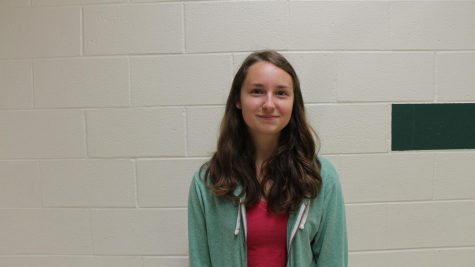April calls for Austism Awareness
April 25, 2019
April is Autism Awareness Month, but most students have at least a vague understanding of autism. This year, organizations like Autism Speaks, an autism awareness advocacy organization that sponsors autism research, are advocating for more than awareness; they are encouraging autism acceptance.
“[Students with autism] don’t always have the opportunity to show what their strengths are,” special education teacher Brian Campo said. “It’s a group of people who are misunderstood.”
According to the Centers for Disease Control, one out of 59 eight-year-olds are diagnosed with autism, but autism comes in many forms. Each individual is unique and has various strengths and weaknesses.
“People try to categorize people with autism,” Campo said. “Sometimes they sell them short. They don’t give them the opportunity to be the person they are. They get kind of lost in the shuffle.”
Stereotyping leads not only to a misunderstanding of those with autism, but to a lack of accommodations for them. According to Autism Speaks, 50 percent of students with an autism diagnosis do not graduate on time or at all, and 70 percent of adults with autism are unemployed or underemployed. Without acceptance, many with autism feel out-of-place and lacking the right support.
“It’s tougher for an individual student to recognize someone with autism,” Campo said. “So, in general, just treat everyone with acceptance and value what they bring to the table, even if they’re not exactly someone who is like you.”
The special education program runs field trips to give students with autism social experiences and help them build life skills so they may be more willing and prepared to pursue adult lives after high school.
“We’ve gone everywhere from college visits to restaurants to malls to activities such as bowling,” Campo said. “Going to a restaurant, just this year, we had a student place their first order. A lot of these individuals don’t get exposure to those sorts of activities.”
Social interactions can take time for many students with autism to learn, and these trips facilitate that learning process.
“I’d say the best experience I’ve had were these community trips, and seeing these students socialize with other students,” Campo said. “In the classroom we talk a lot about roles and what you’re supposed to do, but just seeing it out in practice, like kids exchanging contact information on a picnic we had last year, that’s out of the norm, for a lot of the students, making those connections.”
These trips may also teach the community.
“We want to get them [students with autism] out in the community, so the community can see they’re just like everybody else,” Campo said.
According to a study published in 2014 by the American Academy of Pediatrics, education for a student with autism is around $8,600 more than for a student without autism, but fundraisers can help. During Autism Awareness Month, several activities help raise money for the community field trips. Faculty members purchase autism awareness shirts, and students sell Pura Vida bracelets during lunch periods.
“Each year we’ve increased the amount of money we’ve raised,” Campo said.
Students from WALCC, NHS, and Key Club volunteer to sell the bracelets. The boys and girls track and field teams as well as the badminton team will compete against each other to raise the most money.
“It’s been exciting,” Campo said. “It’s kicked off, and now we’re gaining more and more student involvement.”
This is the fifth year Autism Awareness Month permeates the school. The first year, students handed out pamphlets that explained autism. Now, they raise money to help their fellow students.
“Find the greatness that people have in their differences and learn to live with them and appreciate people,” Campo said. “If you do that with everybody, then it doesn’t matter if they have autism or not.”



